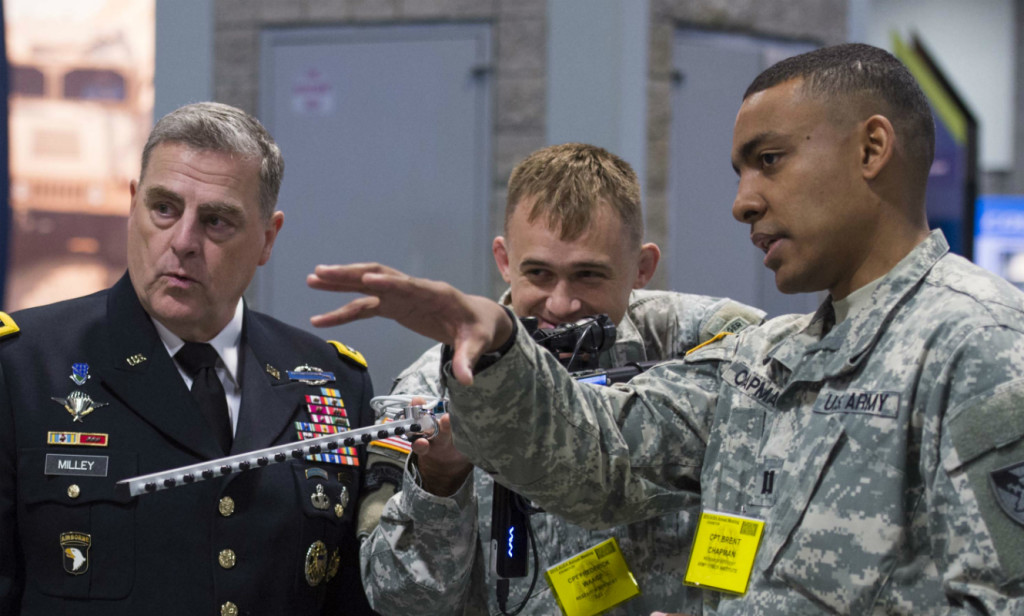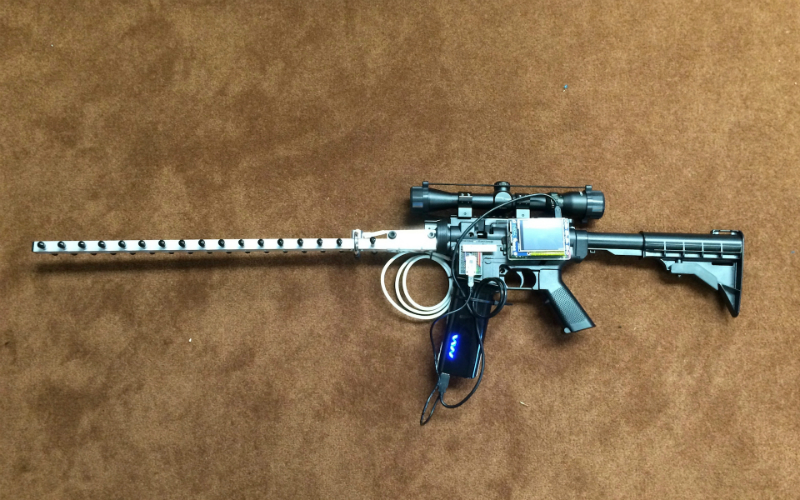It is Time for the U.S. Military to Innovate Like Insurgents

The recently concluded meeting of the Association of the United States Army (AUSA) has become a yearly tradition for senior military leaders, congressional staff, and members of foreign armies to meet and participate in professional development opportunities, while also providing visibility to over 500 members of the defense industrial base and their products and services. Drawing listeners with interactive displays and swag, vendors enthusiastically pitch their latest wares for supporting the warfighter.
As the incumbent power in a market of limited competition, the defense industrial base has enjoyed decades of unfettered access to government resources, assisted in part by both regulatory and technological barriers to entry for outside parties. Of course, there is a time and a place for large organizations creating complex systems; for example, creating a next-generation combat aircraft is beyond the reach of small groups or individuals. However, recent Defense Department pushes toward rapid innovation, such as those seen in Silicon Valley, are challenging the status quo.
Amidst the sea of defense contractors at this year’s AUSA expo, we — three young new players in this market — stood. We weren’t vendors, contractors or legislators, but rather active-duty Army captains, all members of the new cyber branch assigned to the Army Cyber Institute at West Point, the Army’s agent for change in cyberspace operations. Huddled around a shared U.S. Army demonstration area in the shadow of the sprawling defense contractor mega-booths, we employed a new tool that we had developed just weeks before the expo: the Cyber Capability Rifle. Successfully able to remotely disable an overhead UAV, we developed this proof-of-concept device in a dusty backyard garage, as amateur engineers and do-it-yourselfers, in about 10 hours with about $150 of spare parts. Encouraged by the cyber branch’s innovative spirit and entrepreneurial culture to explore the technological possibilities and enabled by the resources of the Army Cyber Institute, as makers we demonstrated the possibilities of unconventional thought and experimentation. For the Army to be prepared to “operate across a range of operations … anywhere around the world any time,” it must develop asymmetric acquisition methods that enable warfighters to make their own tools at the tactical edge in a timely and cost-effective manner requiring as little red tape as possible.

We have collectively spent years deployed in theaters of armed combat fighting asymmetric adversaries who effectively employed asymmetric tools made on the battlefield using materials garnered through an asymmetric acquisition method. If the “winners” of the last two of this century’s wars were determined solely by each opponent’s ability to innovate technologically at the tactical edge, we would undoubtedly be the losers. For example, to develop the “Snapper,” a hybrid of a victim-initiated and remotely-controlled IED, Afghan insurgents did not spend months crafting a perfect “operational needs statement” to be pushed through contract offices and bid on by a pool of defense contractors who then sub-contract out the requirement to be developed after months of research and development before production. A more likely story is that an insurgent team leader, after failing multiple times to remotely detonate an IED on a U.S. convoy, employed open innovation and enlisted one of his buddies to scavenge for parts, such as used tires and nails in the case of the Snapper IED, available to them locally.
Using tools from his garage and armed with the insurgent team leader’s capability requirement, the insurgent bomb-maker then rapidly made a Minimum Viable Product (prototype Snapper IEDs), bench tested them, and equipped the insurgent team leader who employed them in the field. After a week of failed and successful attempts at employing Snappers, the insurgent team leader provided feedback to the maker who adjusted the product to meet the requirements. Once the team leader validated the prototype Snapper IED’s effectiveness, he brought the Snapper IED to market by disseminating the blueprints and specifications to fellow insurgent operatives over a pre-existing communications network — word of mouth and cell phones. Luckily for the resource-strapped insurgent, the Snapper probably cost under $100 to make. Unlucky for us, each up-armored U.S. vehicle that Snapper IEDs destroyed cost upwards of $1 million. In some instances an asymmetric acquisition process that pushes the making of capability to the tactical edge proves more effective and efficient than the traditional acquisition mode focused on cost, schedule, and performance while remaining risk averse resulting in budget overages, increased production time, and potentially less relevant capabilities.
Reflecting on one of the key themes from Gen. Stanley McChrystal’s Team of Teams, we must acknowledge that we are entering the information age in which the barriers to entry to acquire advanced technology are rapidly decreasing. We are in an age where three Army captains can make, test, and employ a technological device that through traditional means of acquisition might take months, if not years to obtain, cost orders of magnitude more, and require vast amounts of administrative overhead. Team of Teams goes further to explain how the Joint Special Operations Command (JSOC) of 2001 was built under a traditional hierarchy and unprepared to effectively fight an asymmetric network of adversaries. In turn, to effectively combat these networks, JSOC transformed itself into a flat, adaptive, and resilient network congruent with that of its adversaries. Many of the asymmetric adversaries that the Army faced over the course of the two recent wars were often equipped through the act of making, a process by which trained personnel, facilities, tools, and materials required for capability and tool development were pushed to the tactical edge, where the warfighter requirements are best known and articulated. To be prepared to operate across a range of operations anywhere around the world at any time, from combating asymmetric adversaries to events supporting recovery operations during humanitarian crises, it is time for the Army to complement the current acquisition process with an agile and responsive asymmetric acquisition process to empower and enable creativity and innovation at the tactical edge.
Captains Brent Chapman, Matt Hutchison, and Erick Waage are cyber officers and members of the Army Cyber Institute at West Point’s Strategic Initiatives Group. Collectively, they have served over half a dozen deployments overseas in cyber-related positions supporting both conventional and special operations forces.
The views expressed in this article are those of the authors and do not reflect the official policy or position of the United States Military Academy, Army Cyber Command, the Department of the Army, U.S. Cyber Command, the Department of Defense, or the U.S. government. Note that the Cyber Capability Rifle is currently not an Army Program of Record.
Photo credit: Chief of Staff of the Army

